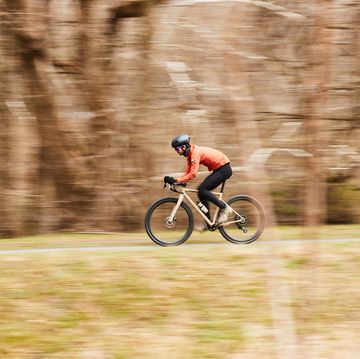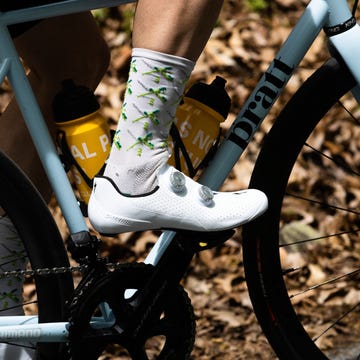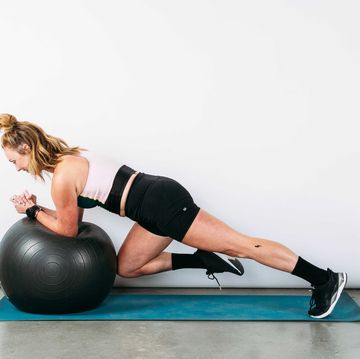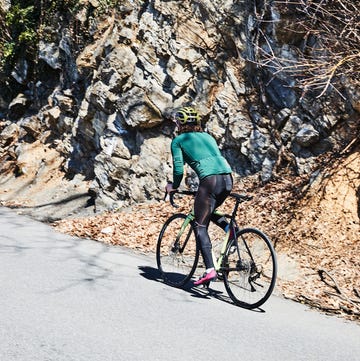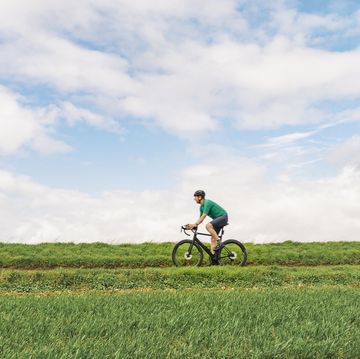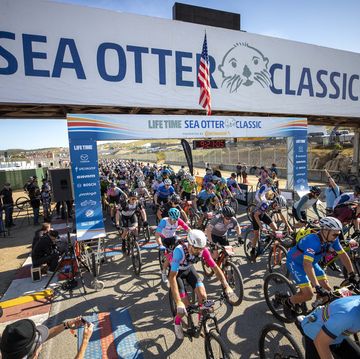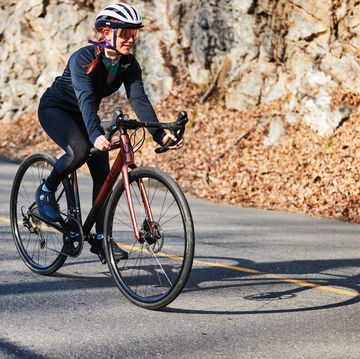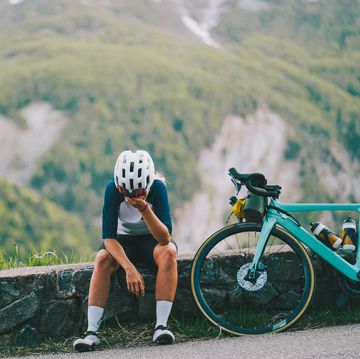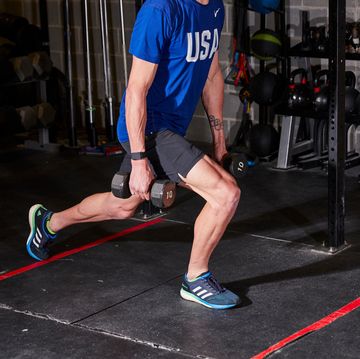If you’re waiting to reach for that bottle of sports drink until you feel thirsty, you may have a drinking problem.
“The body’s thirst mechanism is very poorly regulated,” says Eric Sternlicht, PhD, a professor of kinesiology at Chapman University and a two-time master’s time-trial national champion. He says that you only start feeling thirsty after your body has already lost two percent of its total water volume, and by that point, “the literature has shown that performance drops by up to 10 percent.”
But a performance dip is just the beginning of your problems when you go down the path of dehydration on the bike. If your condition worsens, you could be facing serious muscle fatigue and cognitive delays.
RELATED: 5 Common Hydration Bad Habits to Quit Today
The Dehydration Roadmap
If you're on the bike regularly, you're going to want to know the basic science of dehydration: As your core temperature heats up during exercise, your body produces sweat to keep cool. At first, your body pulls water from your blood, which alters your blood-plasma volume. But there’s a limit to how much water can be taken from the bloodstream, Sternlicht says, because “you still need to maintain cardiovascular function for your brain and lungs.” If you get dehydrated enough, your body will begin pulling water from muscle cells to keep the essential organs going—and that’s when things get hairy. You may start getting cramps, and if you use a power meter, you’ll likely see a real dip in the number of watts you can push.
If you reach that point, chugging your sports drink or water won’t immediately reverse power losses or cramping. That’s because it takes a while to move water out of the stomach and into the bloodstream, so you’ll likely dehydrate even further before what you’ve just consumed kicks in—which will cause even worse declines. “Between three- and five-percent dehydration, you’ll start to have some cognitive effects,” says Damion Martins, MD, the director of orthopedics and sports medicine at Atlantic Sports Health in New Jersey. Not only will your rate of perceived exertion likely rise, he says, but you could have slower reaction times or difficulty focusing—two things that spell big trouble for cyclists.
Get to the point where your body has lost 10 percent of its water volume and you can expect to feel mentally weak, physically drained, and possibly even a little ill. If you don’t get fluids in quickly, your workout will soon be over—and you could be risking tomorrow’s workout, too. “Muscle recovery takes longer if you’re significantly dehydrated,” says Martins.
Drinking to Avoid Dehydration
So how much should you drink while riding? It can be hard to say. Hydration experts are split on many of the most common guidelines (like drinking to thirst), and everyone sweats at slightly different rates. Plus, some people are “saltier” sweaters than others: If you regularly have to brush white salt crystals off your cycling shorts post-ride, you may need to be more cognizant of taking in added sodium than the guy you’re riding next to, which means taking in more from an electrolyte-laden sports drink throughout your ride.
However, a good, basic rule of thumb to follow is the American College of Sports Medicine’s guidelines. The organization suggests that cyclists take in eight ounces of water every 20 minutes. “And if you’re going to be out for more than an hour, you should be taking in fluid with an eight-percent carbohydrate fluid,” says Martins. That’s because, according to the ACSM, drinking an electrolyte-enhanced sports drink that is six- to eight-percent carbohydrate will result in better—and faster—rehydration. “Active transport proteins in the intestinal tract move carbs very quickly into the bloodstream,” says Sternlicht, adding that water molecules follow closely behind these carbs. (Learn more about the carbs and hydration).
Fun tip: If you want to make your own sports drink at home, Sternlicht says that diluting pure fruit juices with water in a one-to-one ratio results in that near-perfect six-to-eight percent carbohydrate solution—but make sure you’re also getting electrolytes like sodium, potassium and magnesium from somewhere. We suggest trying any of these nutritionist-designed DIY sports drink recipes.
RELATED: How to Know if You're Dangerously Dehydrated
Pre- and Post-Ride Hydration Tips
Even if you’ll be riding for a while, there’s no need to carry a gallon of liquid and swig like a sailor. In addition to drinking regularly on the bike, you can combat dehydration through pre-hydration. Before you start your next ride, down two cups of fluid in the 15 minutes before you head out. And no worries about needing to pee as soon as you start pedaling: That urge is an adrenal response that’s going to happen whether you drink or not, our experts say, but it will make sure you start with a full tank.
As you’re guzzling, remember that your body can only handle so much liquid. Hyponatremia—over-hydration—happens when cells in the body absorb too much water. “It’s obviously rare but it’s not an uncommon thing,” says Martins, adding that novice athletes, especially lightweight ones and women seem to be at higher risk. If not caught and treated, hyponatremia can lead to death. So don’t just keep drinking out of fear of dehydration.
Finally, keep sipping after the ride is over. Ideally you should weigh yourself before and after a hot, sweaty ride (minus your sweaty clothes afterwards), and drink half a liter of water for every pound of weight lost. However, since you’re likely in a sodium-deprived state, risk of hyponatremia can be slightly higher post-workout, so make sure you consume something with salt in it, be it a recovery meal or an electrolyte-enhanced beverage.
If you think you’re chronically missing the mark on hydration, Martins suggests buying an over-the-counter device to test the specific gravity of your urine. This is a much more scientifically-sound method than simply looking in the toilet bowl to gauge the color with paint samples. Test your urine first thing in the morning to see if you’re really getting the water you need to perform at your best.


